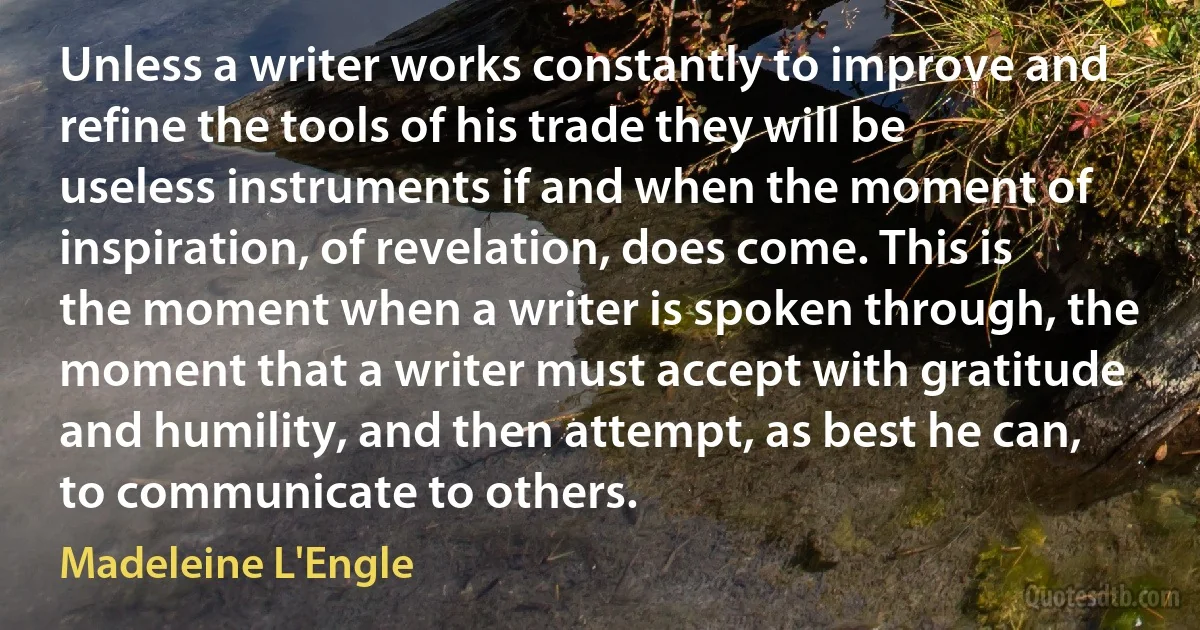Works Quotes - page 80
.. my favorite artist, when I first began to paint, was actually Cézanne. Later, between 1920 – 1930, I developed a great interest in Chardin [famous for his still-life], w:Vermeer and Corot, too.... that's why you have been able to detect in my works of between 1912 – 1916 some recognizable influences of the early Paris cubists and above all, of Cézanne.

Giorgio Morandi
My only source of instruction has always been the study of works, whether of the past or contemporary artists, which can offer us an answer to our questions if we formulate these properly... I would never be of much use as a guide or instructor, nor have I ever wanted to be one, even when I have been asked to undertake the job [still, Morandi was art professor - etchings - at the Art Academy of Bologna for many years].

Giorgio Morandi
[the foreign Muslims (or Turks)] "alone are capable of virtue, kindness, generosity, valour, good deed, good works, truthfulness, keeping of promises... loyalty, clarity of vision, justice, equity, recognition of rights, gratitude for favours and fear of God. They are, consequently, said to be noble, free born, virtuous, religious, of high pedigree and pure birth. These groups, alone are worthy of offices and posts in the government... Owing to their actions the government of the king is strengthened and adorned.” [On the other hand the] "low-born” (Indian) Muslims are capable only of vices - immodesty, falsehood, miserliness, misappropriation, wrongfulness, lies, evil-speaking ingratitude,...shamelessness, impundence... [So they are called] low-born, bazaar people, base, mean, worthless, plebian, shameless and of dirty birth”.

Ziauddin Barani
As the paintings the 'Night Watch' and the 'Staalmeesters' [famous works of Rembrandt ] are showed now it is clear to everyone that they have searched but, indeed messed with it, to enable these paintings to do what they can do [visually]. But you see, they did not find a good solution just because they appreciated the museum itself [a rather new building, then! ] higher than the paintings themselves. I told at the very first opening of the Rijksmuseum [1885] already everyone who wanted to listen to me: in this room, where the Night Watch' is hanging now, it can never comes to its full right.... There must be built for the 'Night Watch' and for the 'Staalmeesters' a separate room each.... [with] standing light and the paintings positioned on an easel or standard behind.... I just want to add here, that my own studio can serve as a very special model.... concerning the sizes and the lighting.

Jozef Israëls
.. on my travels, for example, abroad,.. I see things that attract me, in the works of others, - which impress me. That's what you reflect upon at times. And when you come home you think: Me too have to make something like that... Then you start, and when it's finished it looks like the work of that person or another... But your own originality doesn't get lost, - your sentiment remains!.. And this happens not only to me, - this happens to others also... Unintentionally you continue to build on motives of others..

Jozef Israëls
Lord, oh Lord, will I return to you once, being a genuine artist. Will all those Art lovers once behold my works with reverence and the laurel of Art then adorn my head... I experience so ardently all the beauty of my noble career... And once again I call to you, it would be much better not to live at all than being disappointed in my feeling.

Jozef Israëls
Do you like to see what can be transformed from a flat, elementary rural scene - bearing the stamp of nature, the mark of truth - into something most beautiful and graceful? Look at the works of our great [painter] Schelfhout. There you will find represented plain nature at the most elegant, but moreover with a faithfulness and truth, which only Schelfhout can represent.

Barend Cornelis Koekkoek
Kunti, like Ahalya with Indra, is curious. She wishes to test whether Durvasa's boon really works. Significantly, this desire arises in her after she has menstruated. In her account to Vyasa, she frankly states that she had desired (sprihayanti) Surya, again reminding us of Ahalya when approached by Indra. Perceiving a radiant being in the rising sun she invites him, using the mantra. Once summoned, Surya, like Indra, will not return unsatisfied. He cajoles and browbeats the girl, assuring her of unimpaired virginity, and threatening to consume the kingdom and the boon-bestowing sage if denied. A thrilling conflation of desire and fear overpower Kunti's reluctance, and she stipulates that the son thus born must be like his father.

Kunti
The United States, as you point out, has been actually freer than most in terms of offering access to information. It doesn't have to be this way. Openness is not the default in terms of how if you look back in time, or even around the world. We need to show how openness works better. That you end up with companies that thrive better. That you have, with standards, you have more competition that builds more jobs. That openness is a win.

Brewster Kahle
[the 'Surfboards' - series works Noland made mid-70's] were almost like cut-out figures without being figurative... I think of them, in some way, as being like figures; they remind me of figures in vertical Cubist paintings. Even the small pictures have that kind of human proportion in the rectangles. It's not exactly a reference, but the relation of length to width in the rectangles is like a person.

Kenneth Noland
The dematerialization of the art object from 1966 to 1972: a cross-reference book of information on some esthetic boundaries: consisting of a bibliography into which are inserted a fragmented text, art works, documents, interviews, and symposia, arranged chronologically and focused on so-called conceptual or information or idea art with mentions of such vaguely designated areas as minimal, anti-form, systems, earth, or process art, occurring now in the Americas, Europe, England, Australia, and Asia (with occasional political overtones) edited and annotated by Lucy R. Lippard. Six Years.

Lucy R. Lippard
It is a tough act to follow, for sure. As I'm hearing him talk through some of the things I'm realizing why our partnership works, because we both think the world of one another. Scott is the most disciplined, driven athlete I've ever met. There's a fierce competitor deep within and the passion and the raw talent that is there - the ability to move and hear music and interpret it - is unlike anyone else I've ever seen on the ice. And I think because he wears his heart on his sleeve people feel so drawn in and captivated by his performances. He's generous, thoughtful and extremely insightful. He's able to understand the glide of the blade differently.

Scott Moir
![As regards my paintings of similar compositions I cannot give you any indication [about possible 'variants' in his works] because I'm afraid I've never made a note of where my paintings have ended up... I am always at work and work is my sole passion. And unfortunately I've become aware that I must always start from the beginning, and ought to burn what I've done in the past. (Giorgio Morandi)](https://cdn.quotesdtb.com/img/quotes_images_webp/46/giorgio-morandi-beginning-burn-851046.webp)
![.. the owner [of the painting 'When one grows old', 1883].... had to hear a lot of comments about it, they called it the apotheosis of a cape, the figure much too big for the frame, etc. etc. [deleted by Israëls:] so they advised him to exchange it for one of my other works. (Jozef Israëls)](https://cdn.quotesdtb.com/img/quotes_images_webp/90/jozef-isra-ls-apotheosis-952190.webp)

